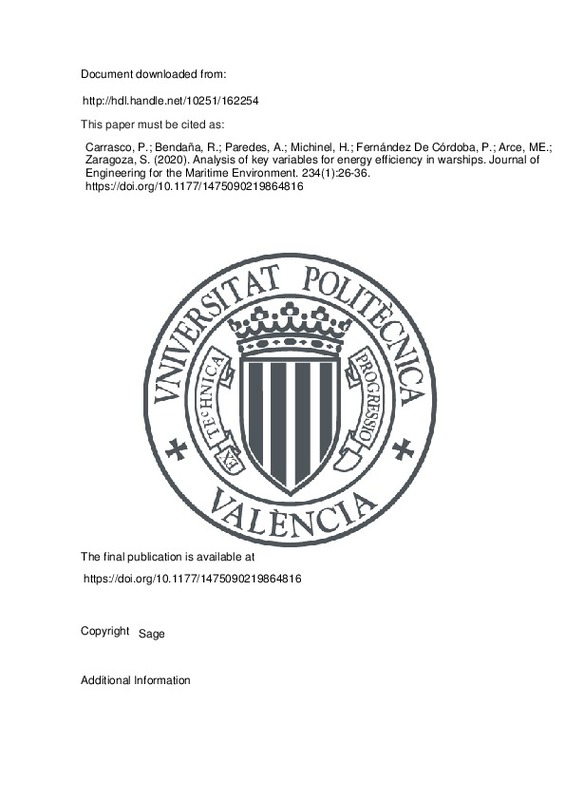Agarwal, S., Kahlon, N., Agarwal, P., & Dixit, S. (2017). Relationship between Student’s Family Socio-economic Status, Gap Year/years after Schooling and Self-concept: A Cross-Sectional Study among Medical Students. International Journal of Physiology, 5(1), 21. doi:10.5958/2320-608x.2017.00005.1
Jafarzadeh, S., & Utne, I. B. (2014). A framework to bridge the energy efficiency gap in shipping. Energy, 69, 603-612. doi:10.1016/j.energy.2014.03.056
Papanikolaou, A., Zaraphonitis, G., Bitner-Gregersen, E., Shigunov, V., Moctar, O. E., Soares, C. G., … Sprenger, F. (2016). Energy Efficient Safe SHip Operation (SHOPERA). Transportation Research Procedia, 14, 820-829. doi:10.1016/j.trpro.2016.05.030
[+]
Agarwal, S., Kahlon, N., Agarwal, P., & Dixit, S. (2017). Relationship between Student’s Family Socio-economic Status, Gap Year/years after Schooling and Self-concept: A Cross-Sectional Study among Medical Students. International Journal of Physiology, 5(1), 21. doi:10.5958/2320-608x.2017.00005.1
Jafarzadeh, S., & Utne, I. B. (2014). A framework to bridge the energy efficiency gap in shipping. Energy, 69, 603-612. doi:10.1016/j.energy.2014.03.056
Papanikolaou, A., Zaraphonitis, G., Bitner-Gregersen, E., Shigunov, V., Moctar, O. E., Soares, C. G., … Sprenger, F. (2016). Energy Efficient Safe SHip Operation (SHOPERA). Transportation Research Procedia, 14, 820-829. doi:10.1016/j.trpro.2016.05.030
Elena Arce, M., Saavedra, Á., Míguez, J. L., & Granada, E. (2015). The use of grey-based methods in multi-criteria decision analysis for the evaluation of sustainable energy systems: A review. Renewable and Sustainable Energy Reviews, 47, 924-932. doi:10.1016/j.rser.2015.03.010
Patterson, M. G. (1996). What is energy efficiency? Energy Policy, 24(5), 377-390. doi:10.1016/0301-4215(96)00017-1
Figari, M., D’Amico, M., & Gaggero, P. (2011). Evaluation of ship efficiency indexes. Sustainable Maritime Transportation and Exploitation of Sea Resources, 621-627. doi:10.1201/b11810-94
Tran, T. A. (2017). A research on the energy efficiency operational indicator EEOI calculation tool on M/V NSU JUSTICE of VINIC transportation company, Vietnam. Journal of Ocean Engineering and Science, 2(1), 55-60. doi:10.1016/j.joes.2017.01.001
Coraddu, A., Figari, M., & Savio, S. (2014). Numerical investigation on ship energy efficiency by Monte Carlo simulation. Proceedings of the Institution of Mechanical Engineers, Part M: Journal of Engineering for the Maritime Environment, 228(3), 220-234. doi:10.1177/1475090214524184
STEPANCHICK, J., & BROWN, A. (2007). Revisiting DDGX/DDG-51 Concept Exploration. Naval Engineers Journal, 119(3), 67-88. doi:10.1111/j.1559-3584.2007.00069.x
Young, S., Newell, J., & Little, G. (2001). Beyond Electric Ship. Naval Engineers Journal, 113(4), 79-92. doi:10.1111/j.1559-3584.2001.tb00090.x
Tillig F, Ringsberg J, Mao W, et al. A generic energy systems model for efficient ship design and operation. Proc IMechE, Part M: J Engineering for the Maritime Environment 2017; 231(2): 649–666.
Ballou, P. J. (2013). Ship Energy Efficiency Management Requires a Total Solution Approach. Marine Technology Society Journal, 47(1), 83-95. doi:10.4031/mtsj.47.1.5
Reddy, T. A. (2011). Applied Data Analysis and Modeling for Energy Engineers and Scientists. doi:10.1007/978-1-4419-9613-8
Creutzig, F., Baiocchi, G., Bierkandt, R., Pichler, P.-P., & Seto, K. C. (2015). Global typology of urban energy use and potentials for an urbanization mitigation wedge. Proceedings of the National Academy of Sciences, 112(20), 6283-6288. doi:10.1073/pnas.1315545112
Mueller, L., Jakobi, G., Czech, H., Stengel, B., Orasche, J., Arteaga-Salas, J. M., … Zimmermann, R. (2015). Characteristics and temporal evolution of particulate emissions from a ship diesel engine. Applied Energy, 155, 204-217. doi:10.1016/j.apenergy.2015.05.115
Perera, L. P., & Mo, B. (2016). Data analysis on marine engine operating regions in relation to ship navigation. Ocean Engineering, 128, 163-172. doi:10.1016/j.oceaneng.2016.10.029
Bialystocki, N., & Konovessis, D. (2016). On the estimation of ship’s fuel consumption and speed curve: A statistical approach. Journal of Ocean Engineering and Science, 1(2), 157-166. doi:10.1016/j.joes.2016.02.001
Lepore, A., dos Reis, M. S., Palumbo, B., Rendall, R., & Capezza, C. (2017). A comparison of advanced regression techniques for predicting ship CO2emissions. Quality and Reliability Engineering International, 33(6), 1281-1292. doi:10.1002/qre.2171
Brefort, D., Shields, C., Habben Jansen, A., Duchateau, E., Pawling, R., Droste, K., … Kana, A. A. (2018). An architectural framework for distributed naval ship systems. Ocean Engineering, 147, 375-385. doi:10.1016/j.oceaneng.2017.10.028
Hernández CR, Fernández R, Arce ME, et al. Análisis del ciclo de vida en Fragatas de la serie F-100. In: Serna J, et al. (eds) Actas: IV Congreso Nacional de i+d en Defensa y Seguridad, DESEi+d, 2016. Spain: Centro Universitario de la Defensa de San Javier.
Orosa, J. A., Costa, Á. M., & Pérez, J. A. (2017). A new modelling procedure of the engine room ventilation system for work risk prevention and energy saving. Proceedings of the Institution of Mechanical Engineers, Part M: Journal of Engineering for the Maritime Environment, 231(4), 863-870. doi:10.1177/1475090216687148
Akin, J. E. (2010). Finite Element Analysis Concepts. doi:10.1142/7785
Saad, Y. (2003). Iterative Methods for Sparse Linear Systems. doi:10.1137/1.9780898718003
De Marchis, M., Freni, G., & Napoli, E. (2014). Three-dimensional numerical simulations on wind- and tide-induced currents: The case of Augusta Harbour (Italy). Computers & Geosciences, 72, 65-75. doi:10.1016/j.cageo.2014.07.003
Celik, I., & Karatekin, O. (1997). Numerical Experiments on Application of Richardson Extrapolation With Nonuniform Grids. Journal of Fluids Engineering, 119(3), 584-590. doi:10.1115/1.2819284
IX. The approximate arithmetical solution by finite differences of physical problems involving differential equations, with an application to the stresses in a masonry dam. (1911). Philosophical Transactions of the Royal Society of London. Series A, Containing Papers of a Mathematical or Physical Character, 210(459-470), 307-357. doi:10.1098/rsta.1911.0009
Roache, P. J., Ghia, K. N., & White, F. M. (1986). Editorial Policy Statement on the Control of Numerical Accuracy. Journal of Fluids Engineering, 108(1), 2. doi:10.1115/1.3242537
Xie, M., & Zhang, W. (2010). Numerical Study on the Three-Dimensional Characteristics of the Tidal Current Around Harbor Entrance. Journal of Hydrodynamics, 22(6), 847-855. doi:10.1016/s1001-6058(09)60125-6
[-]







![[Cerrado]](/themes/UPV/images/candado.png)


